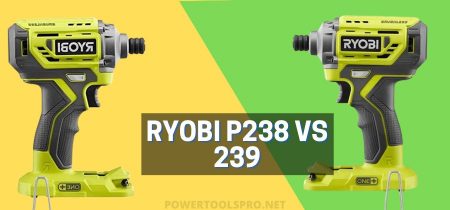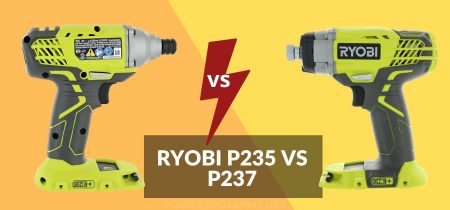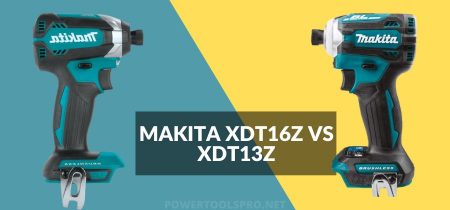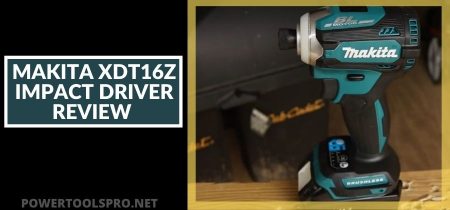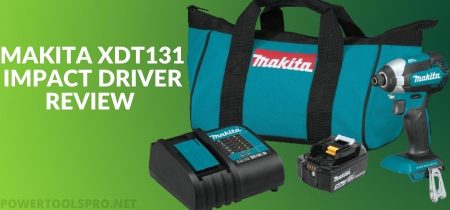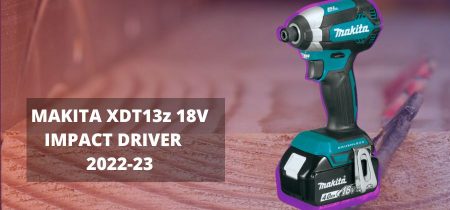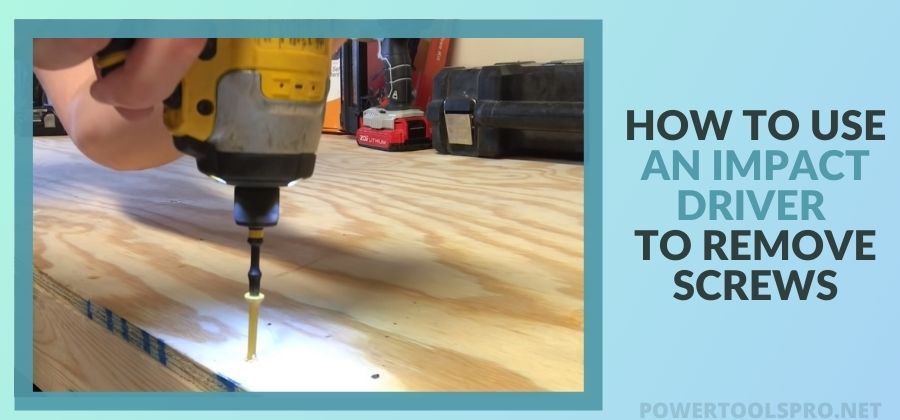
Working with a new tool is just like starting something from scratch. It is exciting as well as exhausting at the same time. Moreover, when it comes to an impact driver, using it for different purposes is unique in itself.
Every question you come across about this tool requires a different solution. Although, an impact driver can perform a lot of functions.
Like, you can use an impact driver for deck screws, lug nuts, and large bolts. However, one of the main questions that people ask about using an impact driver is, how to use an impact driver to remove screws.
The exciting thing is that we have come up with an easy DIY method for you. All it needs is a proper use of the impact driver and boom, your screw will be out of its place. Let’s check out this method.
Using an Impact driver to remove screws?
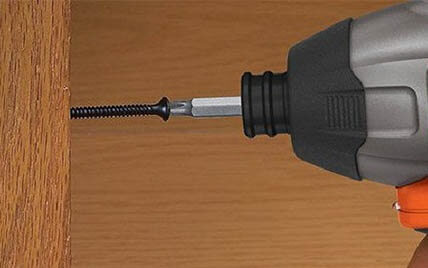
When it comes to removing screws, an ordinary screwdriver will not be enough. That’s why an impact driver is a suitable tool for this purpose. In this regard, I would like to share my personal experience with you. Below is a step by step guide on how to use an impact screwdriver:
Choosing the bit size
The first thing to do before removing a screw is to check the size of the bit chuck on the impact driver. Then, I match it with the head of the screw I am going to remove.
This helps me make a smooth contact between the bit and the screw head. Moreover, it will prevent any malfunction in the work.
If you want to check which chuck bit sets the pattern on your screw, match it with the shape of your impact driver bit chuck.
The most common screw heads that are used in homes and workplaces are the Phillips head and flathead. Thus, for removing Phillips head screws, I choose a cross-shaped screwdriver bit. I use a screwdriver bit with two ridges rather than four for flat head screws.
Checking the position of the bit on the screw head
For the safe removal of a screw, I always check the position of the bit on the screw head. You should also make sure that your impact driver bit is secure in the head of the screw.
If you don’t check it, you will end up either stripping the head or screw or destroying the surrounding area of the screw. Moreover, if the bit is not properly positioned, the screw will not come out no matter how much pressure you apply.
Loosening the screw
Before I start removing the screw from its place, I try to lose it first. For this purpose, I apply low pressure to the head of the screw until the screw becomes loose.
The low to high-pressure setting on an impact driver helps me do this, which can not be achieved by an ordinary driver. You should also do this first, whether you want to remove a new screw or an old screw from its place.
Removing the screw
After loosening the screw, I increase the pressure on it slowly, by increasing the RPM of the impact driver. Now, the impact driver will show its impact action on the screw. And the chuck will start spinning faster and faster. Thus, in a few seconds, the screw comes out.
Impact driver for Lug Nuts
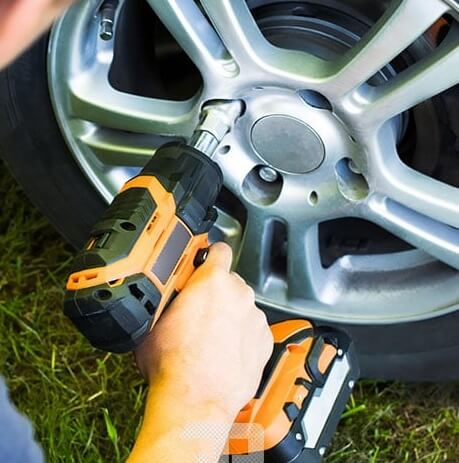
For removing or driving lug nuts, a large amount of torque is needed. Therefore, I also use an impact driver for lug nuts. The impact driver accepts quarter-inch bits.
However, on these bits, I attach lug sockets for removing or driving lug nuts. Once the apparatus is ready, I secure it on the lug nut and start applying normal to high pressure. Then, boom, the lug, the nut comes out. The same is the procedure for driving it. I would recommend using the Dewalt Impact driver or Ryobi Impact.
If you are confused about which tool to use for a specific task or application then read this Comparison between Drywall screwdriver vs Impact driver vs Drill.
The Importance of correct Impact driver Bits
The bits are the most essential part of an impact driver. Without bits, it can’t work. Thus, you should select the correct bit for your work.
Bit Size
Impact driver bits come in different sizes. It could be ½ inch, ¼ inch, or ¾ inch. All of them work best in a specific condition. So the right size is something that decides your working efficiency.
Thus, you will need that size bit which will suit the kind of job you are going to do. The bit size also defines the level of power you are going to use.
Moreover, the portability and weight of an impact driver also depend upon the size of the bit.
Bit Attachment
For an impact driver to work correctly the proper attachment of bit is important. Before you start working, make sure that the bit is properly in the chuck.
This avoids any malfunctions while fastening. Because if there is a slight space between the bit and the chuck attachment, the bit will come out of the chuck while working.
Bit Shape
The bit shape is another important thing that decides whether your impact driver is going to perform the specific task or not. Screws have different shapes engraved on their heads.
Thus, for driving or removing these screws, the bit shape should match that of the head of the screw.
When to not use an Impact driver?
Impact drivers are famous for fastening screws and driving lug nuts. However, despite being a useful tool, it cannot perform many of the takes. Following are not the uses of impact drivers:
Working with soft material:
Impact driver uses a lot of power and torque. Thus, it is suitable for working on heavy objects like hardwood, concrete, and heavy materials. But it is not an ideal tool for soft materials. It can shatter the material by working with precision:
The impact driver requires a great deal of control. As it involves banging action that uses a lot of power, sometimes it’s not easy to control this device. As a result, the required precision level is not reached.
Drilling holes
The impact driver is specifically designed for driving and removing screws. However, people also use it for drilling holes. But the impact driver is not the perfect tool for this purpose. Instead, use a drill for it.
Conclusion
When you’re looking for a solution to how to use an impact driver to remove screws, prepare to be surprised at the number of solutions out there. However, our solution is the simplest and easiest solution of all. Try it! And you will never regret employing it for removing screws.
